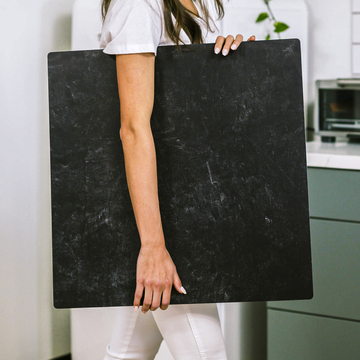When you scroll through Instagram, it’s easy to get lost in a feed full of beautifully styled product photos and effortless flat lays. But behind many of those viral images lies a not-so-secret tool: the humble backdrop board. Most people see these as just decorative surfaces-but there’s a lot more under the surface if you know where to look.
The truth? A well-chosen backdrop board is more than a pretty background-it’s an essential part of your lighting setup and a silent storyteller for your brand. If you want to create images that turn casual scrollers into devoted fans, it’s time to look at backdrop boards with a professional’s eye.
What Makes Backdrop Boards Special?
Most advice you’ll find is about colors and patterns, but professional creators understand that backdrop boards do much more. Here’s what sets them apart:
- They shape light-not just reflect it.
- They influence color temperature-subtly changing the mood of your photos.
- They layer depth-making even quick photos feel polished and dimensional.
Backdrop Boards: The Unsung Light Modifiers
Your lighting isn’t just about windows or lamps. Every surface in your scene-especially your backdrop-affects how light hits your subject. The finish and material of a backdrop board determine whether it:
- Absorbs light for deep shadows and rich contrast (think matte, textured boards).
- Reflects light for a bright, airy vibe (think glossy or light-colored boards).
- Scatters light for a natural, candid feel (think stone or distressed finishes).
Choosing your board is as much about lighting as it is about looks. In fact, if you’re shooting in a small home studio or kitchen, your backdrop might be doing most of the heavy lifting!
“Background Spill”: The Secret Ingredient
Here’s where things get really interesting. The color and finish of your board isn’t just a backdrop-it actually paints reflected color and light onto your entire scene. This effect, often called “background spill,” can shift your photo’s mood dramatically.
- A warm wood panel can create golden undertones in your product’s highlights and shadows, adding subtle warmth.
- A cool stone backdrop can introduce blue-gray hints, making whites look cleaner and products pop with vibrancy.
So, next time you select a backdrop, think about how its color will “glow” onto your subject, not just how it looks behind it.
Micro-Textures: The Fine Art of Brand Storytelling
The smallest details matter. Texture isn’t just about style-it’s about brand cues. Even if your audience can’t name the difference between “textured concrete” and “smooth marble,” they’ll feel it:
- Rough, weathered boards: perfect for handmade or rustic brands seeking authenticity.
- Sleek, seamless boards: ideal for minimal, high-end products needing that touch of modern luxury.
Those tiny pits, lines, or flecks cast micro-shadows that add unexpected richness, directly influencing how customers perceive your work.
Layering and Angling: Tricks for Instant Depth and Focus
Backdrop boards are tools, not just props. When you layer two different boards-say, a textured stone base and a wood back-you separate your product from the background and create real dimensionality. Changing the angle of your boards nudges shadow placement and can even direct attention straight to your product.
Try This Simple Setup
- Set down a matte wooden board as your base.
- Stand a cool-toned stone board as the background.
- Use a white foam core as a reflector opposite your light source.
- Turn each board just a few degrees to instantly change the balance of light and bring out new details.
Watch how your product’s appearance transforms-with minor adjustments, you can go from cozy and rustic to sharp and modern, all in the space of your kitchen or studio.
The Next Generation of Backdrop Boards
The future of backdrop boards is exciting. Here’s what’s on the horizon:
- Adaptive surfaces that switch between matte and glossy finishes for live mood control.
- Technology-enhanced boards designed to make color correction easier with special coatings.
- Eco-conscious materials that look beautiful, shape light, and align with sustainable values.
Stepping Into Staged Storytelling
Your backdrop board isn’t a passive prop-it’s a member of your creative team. With each choice, you’re dialing in the light, setting the emotional tone, and guiding your audience’s eye. Think like a set designer:
- What message does your backdrop whisper about your brand?
- How does its color and texture interact with your product?
- What story does it help you tell?
If you’re ready to move beyond the basics, experiment with new surfaces, textures, and angles. Treat your backdrop as the dynamic, powerful tool it truly is-and watch your photography (and followers) grow.
Have your own backdrop board tips or questions? Share them below or join the Replica Surfaces community for more creative photography insights!



